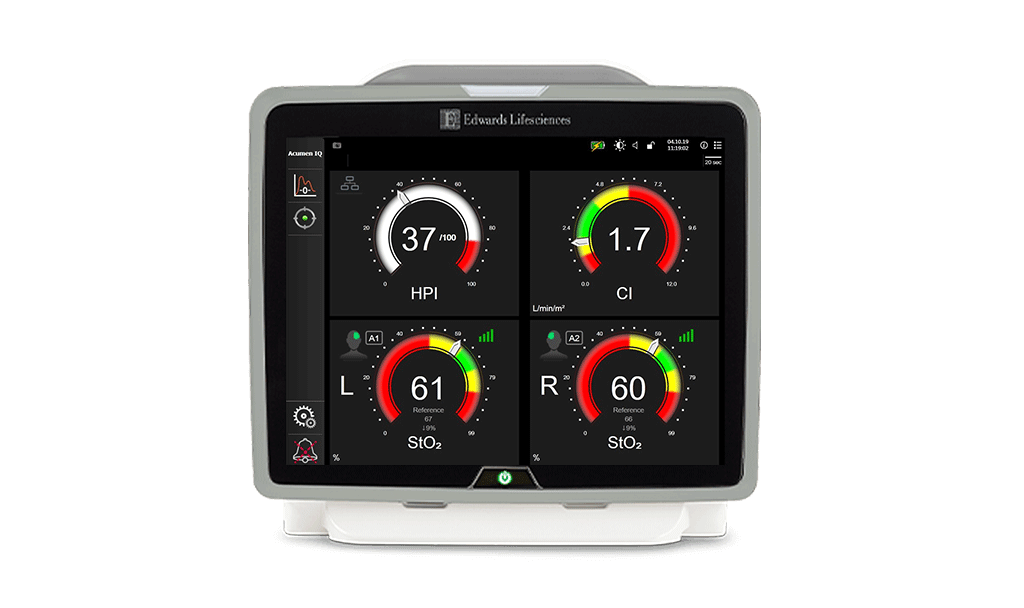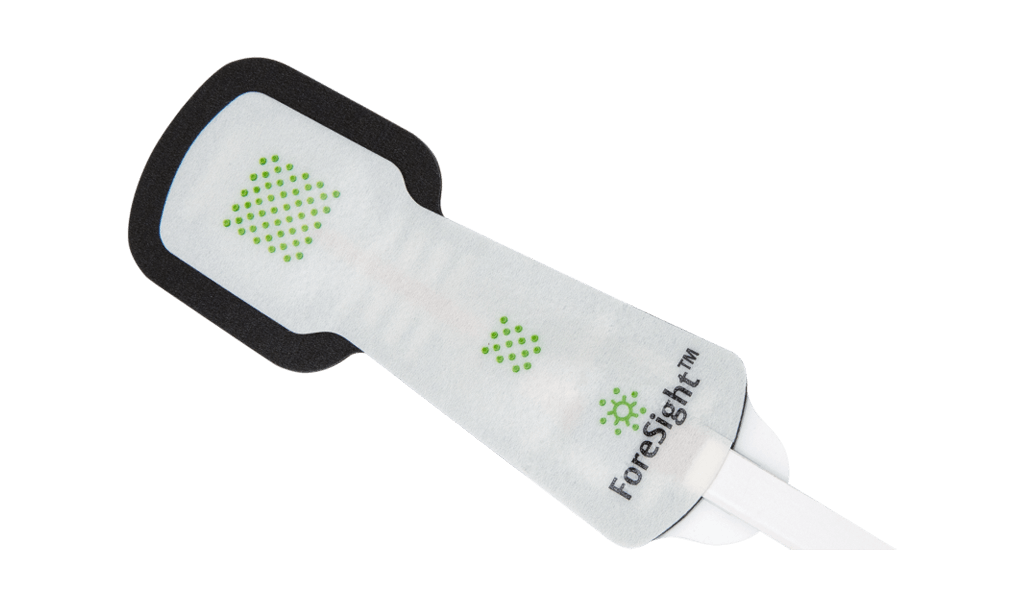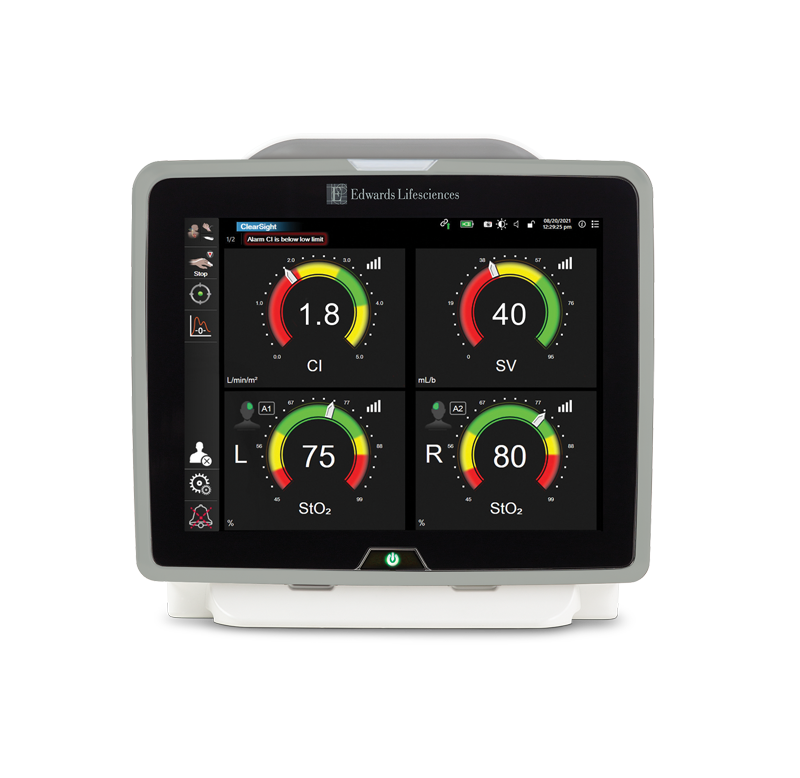- Stroke volume (now SV20s with FastCCO algorithm)
- Cardiac output (now CO20s with FastCCO algorithm)
- Mixed venous oxygen saturation (SvO2)
- Systemic vascular resistance (SVR)
Swan-Ganz pulmonary artery catheters
Right heart. Right information. Right now.
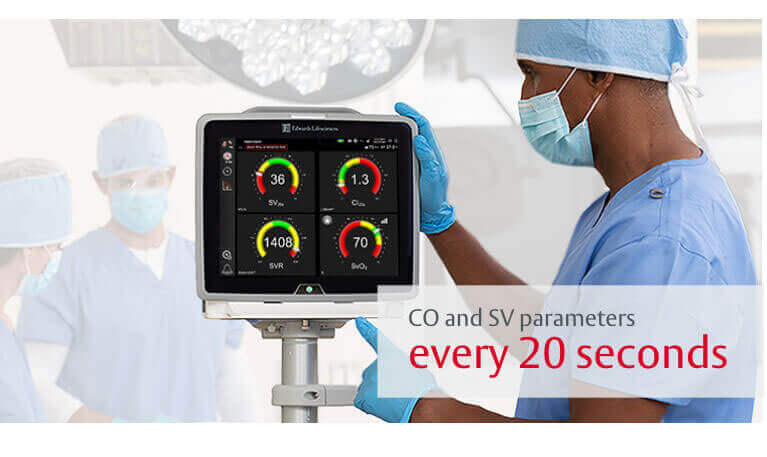
The trusted name in pulmonary artery catheters now delivers haemodynamic insights even faster with the FastCCO algorithm – exclusively available for the Swan-Ganz catheter.
The FastCCO algorithm fuses the trusted performance of continuous thermodilution with the rapid response of arterial pressure-based cardiac output (APCO) to deliver CO and SV status every 20 seconds. Providing quicker flow insights than continuous thermodilution, the FastCCO algorithm enables faster feedback for more efficient clinical decision-making.
Swan-Ganz catheter
Continuous view of cardiac function in your most complex patients
The first flow-directed Swan-Ganz pulmonary artery catheter revolutionized haemodynamic monitoring in critically ill patients.1 By providing a comprehensive haemodynamic profile, utilising continuous data, Swan-Ganz pulmonary artery catheters track your patient’s haemodynamic status to assist your early evaluation.
The Swan-Ganz catheter, now with the FastCCO algorithm, enables CO and SV parameters every 20 seconds.
Target complex patient conditions with advanced haemodynamic parameters
Swan-Ganz catheter with FastCCO algorithm allows continuous monitoring of the balance of oxygen delivery and consumption with these advanced haemodynamic parameters:
- Right ventricular ejection fraction (RVEF)
- Right ventricular end diastolic volume (RVEDV)
- Pulmonary artery pressure (PAP)
- Pulmonary artery occlusion pressure (PAOP)*
SvO2 mixed venous oxygen saturation
Swan-Ganz pulmonary artery catheters provide continuous monitoring of SvO2. Since SvO2 is a sensitive indicator of the patient’s status and generally precedes other indications of cardiopulmonary instability, continuous SvO2 monitoring may allow diagnostic and therapeutic decisions to be made earlier in the patient's clinical course.
Reference:
1. Chatterjee, K. Swan-Ganz Catheters: Past, Present, and Future: A Viewpoint. Circulation JAHA, 2009. 119:147-152.
*PAOP available through balloon occlusion function.
FastCCO algorithm for Swan-Ganz advanced technology catheters
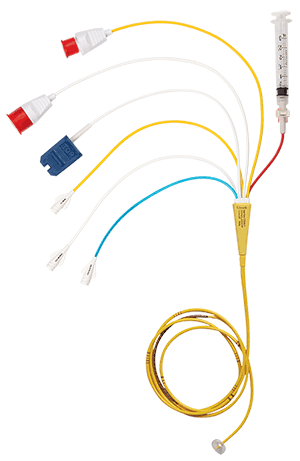
Trusted performance, faster response
Swan-Ganz pulmonary artery catheters provide flow, pressure, and oxygen delivery and consumption parameters. With the FastCCO algorithm, CO and SV update every 20 seconds, giving you a faster, uninterrupted view of cardiac function for more proactive decision support in your most complex patients.
70% faster than current Swan-Ganz pulmonary artery catheter technologies
Fusing the trusted performance of continuous thermodilution with the rapid response of arterial pressure-based cardiac output (APCO), the FastCCO algorithm delivers continuous flow insights that enable you to quickly respond to transient changes in CO.
For cardiac surgical patients, the FastCCO algorithm can deliver cardiac output values quickly upon coming off of bypass during on-pump procedures.
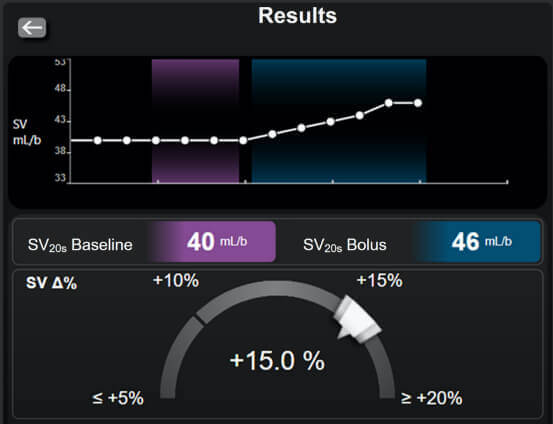
Individualised fluid management
The FastCCO algorithm’s flow parameter readings every 20 seconds enable continuous observation of patient responses to fluid challenges and passive leg raise tests, and allow faster optimisation of fluid management.
The fluid responsiveness test screen on the HemoSphere advanced monitoring platform allows you to quickly assess preload responsiveness by tracking changes in SV, SVI, CO or CI in response to a fluid challenge.
Comprehensive haemodynamic management
FastCCO algorithm is part of the latest software on HemoSphere advanced monitoring platform.
Also available for the modular HemoSphere platform is ForeSight tissue oximetry system, which continuously monitors oxygen saturation, noninvasively. The HemoSphere platform gives you a comprehensive view of tissue oximetry and advanced haemodynamics on one monitor so you can ensure your patient is adequately perfused.
Advanced technology catheter model numbers
| Model | Description | Size (F) | CO20S | SV20S | CCO | SvO2 | SV | SVR | RVEF | RVEDV | VIP port |
| 774F75 | CCOmbo RVEDV (CCO + SvO2 + RVEDV) | 7.5 | X | X | X | X | X | X | X | X | |
| 777F8 | CCOmbo RVEDV/VIP (CCO + SvO2 + RVEDV + VIP lumen) | 8 | X | X | X | X | X | X | X | X | X |
Standard and pacing catheters
The Swan-Ganz catheter. The clarity you need to make more informed decisions.
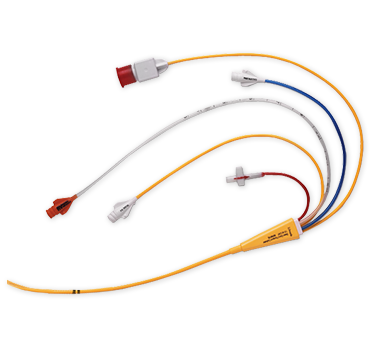
Thermodilution pulmonary artery catheters
The thermodilution catheters monitor intracardiac pressures, cardiac output, and provide infusing solutions.
When used with a compatible monitor, the following parameters are available through the thermodilution catheters: ICO, PAPs, PAOP*
- Assesses haemodynamic condition through direct intracardiac and pulmonary artery pressure monitoring, cardiac output determination and for infusing solutions†
- The distal (pulmonary artery) port also allows sampling of mixed venous blood for the assessment of oxygen transport balance and the calculation of derived parameters such as oxygen consumption, oxygen utilization coefficient, and intrapulmonary shunt fraction
- Swan-Ganz VIP catheters have an extra lumen with proximal port (30 cm) for infusion in addition to the standard distal and injectate lumens to provide direct access to the right atrium
- Swan-Ganz VIP+ catheter has a right ventricular lumen that terminates 19 cm from the catheter tip and the right atrial lumen at 31 cm
Model numbers
| Model | Description | Size (F) | Length (cm) |
| 132F5 | Four Lumen Catheter | 5 | 78 |
| 096F6P | Four Lumen Catheter | 6 | 110 |
| 131F7 | Standard Four Lumen Catheter | 7 | 110 |
* PAOP available through balloon occlusion function.
† When used with a compatible monitoring platform.
‡ When used with an external pacemaker.
§ When used with an external pacemaker and used with the appropriate Edwards Chandler Transluminal A and/or V pacing probes.
Thermodilution is abbreviated as TD.
Clinical evidence
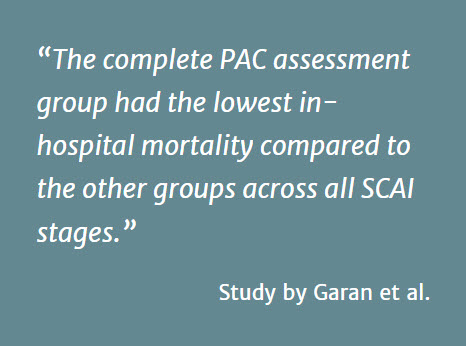
Complete Haemodynamic Profiling with Pulmonary Artery Catheters in Cardiogenic Shock Is Associated with Lower In-Hospital Mortality
The objective of the study, directed by Garan et al., explored the potential benefit of obtaining a complete haemodynamic profile via pulmonary artery catheters (PAC) prior to administration of mechanical circulatory support (MCS) in cardiogenic shock (CS) patients. The study observed that CS patients with complete PAC data obtained prior to MCS had improved survival compared to those who did not.
Further, the study showed that an incomplete haemodynamic dataset was equivalent to having no PAC data with regard to in-hospital mortality. Additional benefits from complete PAC data acquisition include early identification of haemodynamic compromise requiring immediate MCS, in order to avoid potentially irreversible end-organ dysfunction as a result of treatment delays.
- Lower mortality in patients with advanced stages of CS
- Lowest in-hospital mortality across study sub-groups and SCAI stages
- Early identification of haemodynamic compromise
- An incomplete haemodynamic dataset is equivalent to having no PAC data

Pulmonary Artery Catheter Use in Adult Patients Undergoing Cardiac Surgery: a retrospective, cohort study
In this retrospective study conducted by Shaw et al., the utility of pulmonary artery catheters (PAC) in complex cardiac surgeries, and their association with subsequent clinical outcomes including 30-day in-hospital mortality, major morbidity, and length of stay was examined.
The analysis comprised two cohorts totaling 6844 patients who underwent CABG, isolated valve surgery, aortic surgery and other complex procedures from January 1, 2011 to June 30, 2015. The study concluded PAC use did not contribute to in-hospital mortality and could be associated with a statistically significant decrease in length of hospital stay and a significant decrease in the cardiopulmonary morbidity composite.
- Decreased LOS
- Decreased pulmonary morbidity
- No increased risk of in-hospital mortality
Edwards clinical education
Haemodynamic education empowering clinical advancement
With a long-term commitment to improving the quality of care for surgical and critical care patients through education, Edwards clinical education meets you no matter where you are in the learning process — with a continuum of resources and tools that continuously support you as you solve the clinical challenges facing you today, and in the future.
Accessories
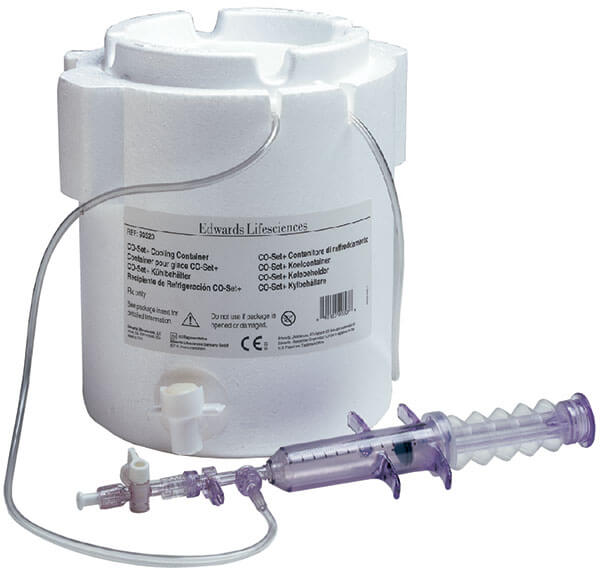
CO-Set+ closed injectate delivery system works effectively with room temperature or cold injectate for the measurement of bolus thermodilution cardiac output when used with a compatible monitoring platform and Swan-Ganz catheter.
Model Numbers
| Model | Description |
| 93600 | Cold Injectate System |
| 93610 | Room Temperature Injectate System |
HemoSphere cables
Please contact your Edwards representative for cables and sensors that are compatible with the HemoSphere platform.
Model numbers
| Model | Description |
| HEMOXSC100 | HemoSphere oximetry cable |
| HEMPSC100 | HemoSphere pressure cable |
| HEMDPT1000 | HemoSphere pressure-out cable |
| 70CC2 | Patient CCO cable |
For output cables, please contact customer support.
Medical device for professional use
For a listing of indications, contraindications, precautions, warnings, and potential adverse events, please refer to the Instructions for Use (consult eifu.edwards.com where applicable).

